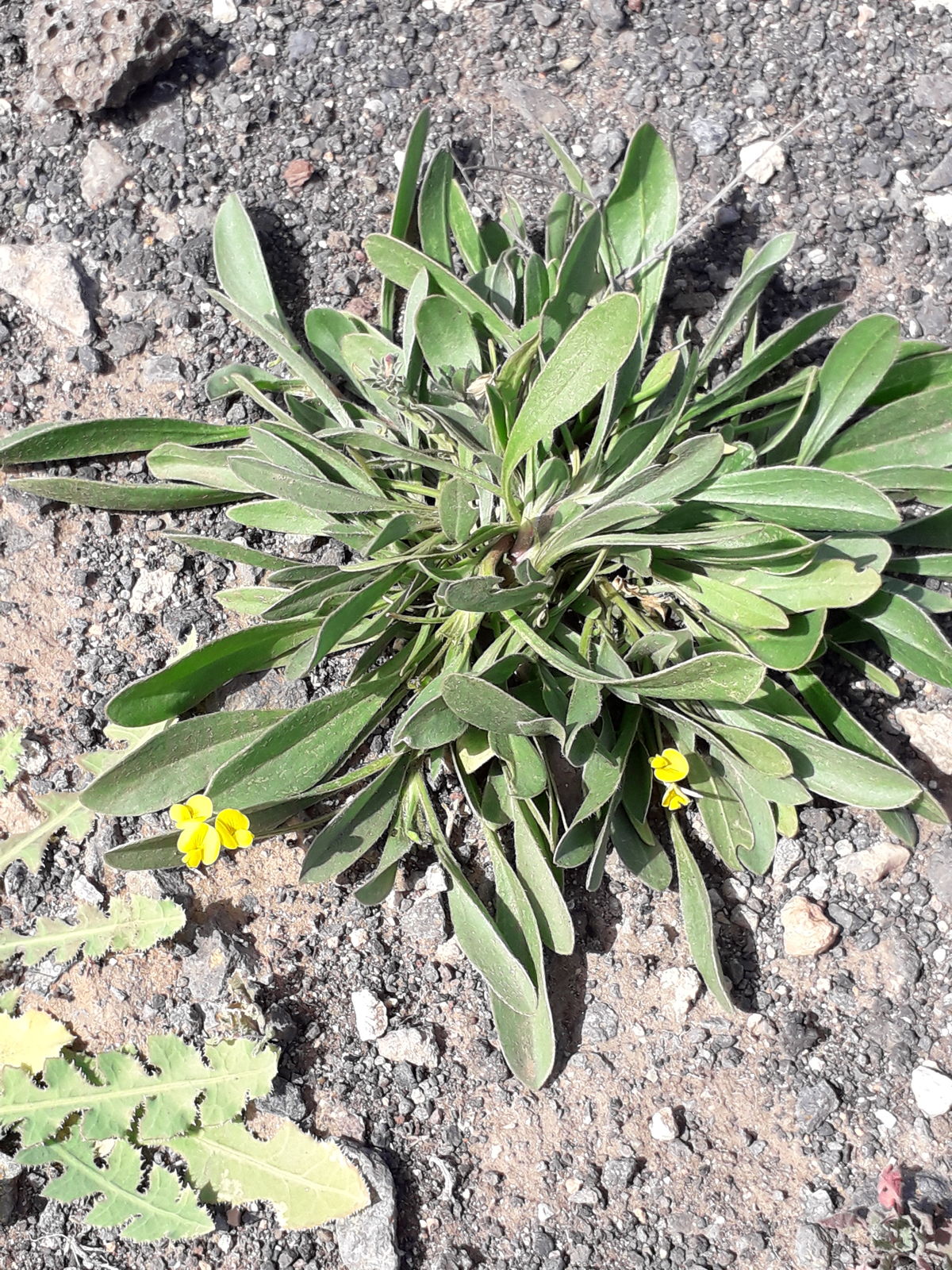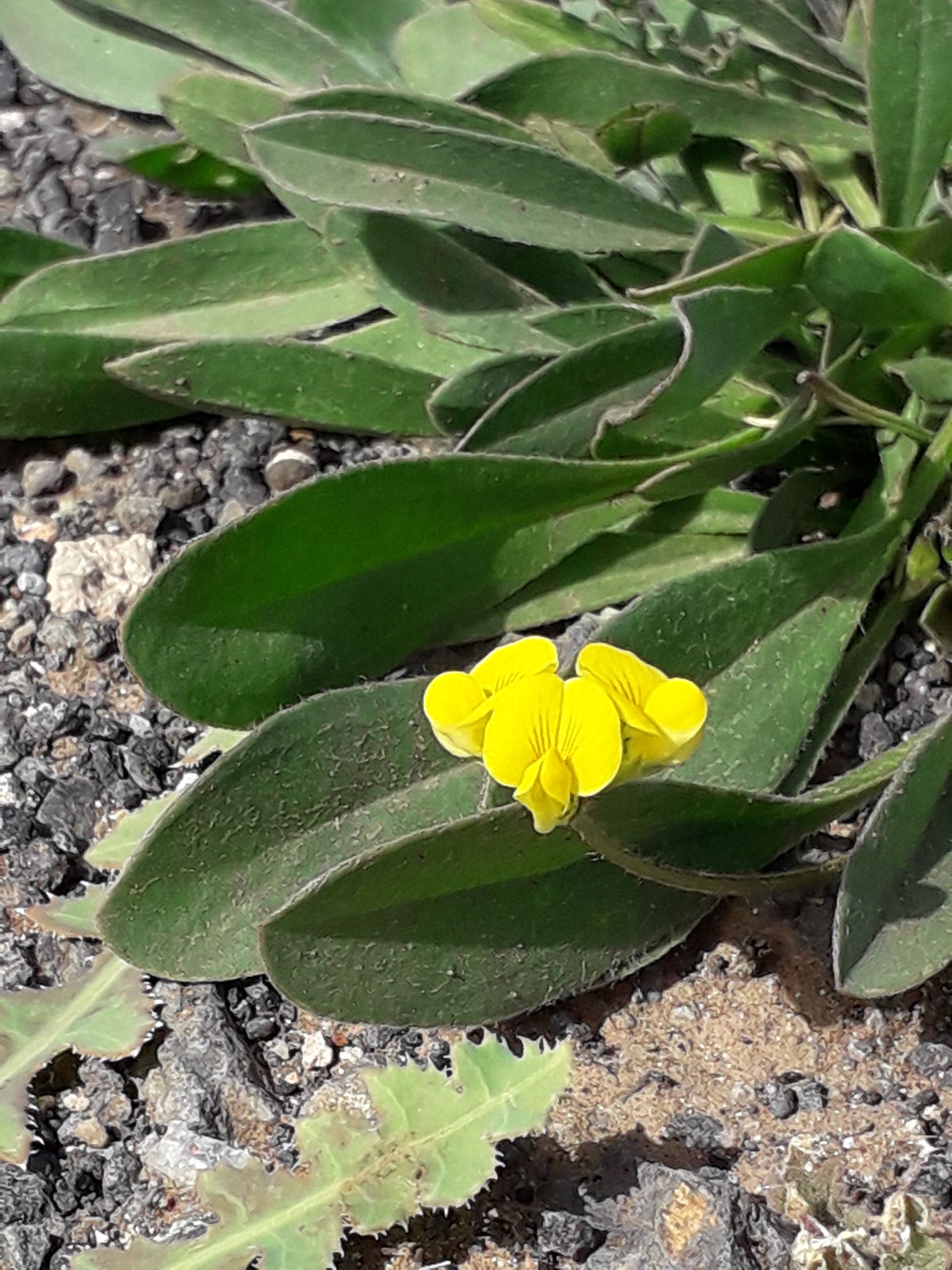Scorpion's Tail
scorpiurus muricatus
Also known as: ["Scorpion's Tail","Curly Caterpillar"]
Overview
A small annual legume with distinctive scorpion-tail shaped pods, native to the Mediterranean region.
Benefits & Perks
["long-flowering","wildlife attractant (bees, butterflies, birds)","drought tolerant"]
Botanical Classification
| Phylum: | Magnoliophyta |
| Class: | Magnoliopsida |
| Order: | Fabales |
| Family: | Fabaceae |
| Genus: | Scorpiurus |
| Botanical Name: | Scorpiurus muricatus |
Plant Characteristics
Basic Information
- Category: Flowers
- Suitable Location: outdoor garden bed in a sunny, sheltered spot
- Suitable For:
- Is Weed: No
- Allergenicity: low
Environmental Needs
- Climate: {"temperatureRange":"10–35°C"}
- Hardiness: {"zones":"8–11"}
- Misting: rarely required, only if ambient humidity is very low
- Drainage: Fast-draining to prevent waterlogging.
- Soil Type: Well-draining, sandy loam with added organic matter.
Maintenance Level
- Maintenance Level: low
- Toughness Level: moderate
- Pruning Frequency: Annually in late winter or early spring; light pruning can be done as needed.
- Pruning Intensity: Moderate; remove up to one-third of growth if overgrown.
Care Details
Ideal Sunlight Coverage:
Full sun (6–8 hours/day); tolerates partial shade in intense summer heat.
Sunlight Tolerance Tips:
Acclimate gradually to intense sun; protect from harsh midday sun; adjust placement based on seasonal light intensity.
Care Requirements
Care Difficulty
easymoderate
Sunlight
full sun
Rotate plant for even growth; use sheer curtains in summer; move outdoors in spring/summer.
Watering
every 7–10 days during active growth, reduce in winter
Water thoroughly but infrequently; ensure soil dries between waterings; avoid wetting foliage.
Soil
well-draining, sandy loam with some organic matter
pH: Slightly acidic to neutral (pH 6.0–7.0).
Use a mix of cactus soil and regular potting soil; avoid heavy clay soils; ensure pots have drainage holes.
Temperature
Prefers 70–85°F (21–29°C); tolerates mild frosts but thrives in warmth.
Avoid drafts; maintain consistent warmth; protect from sudden temperature swings.
Fertilizing
every 4–6 weeks during growing season, none in winter
Fertilize only when actively growing; flush soil occasionally to prevent salt buildup; use organic options for gentle feeding.
Propagation
Methods
Stem cuttings or seed; stem cuttings are faster and more reliable.
Step-by-Step Propagation Guide
- Take a 4–6 inch cutting.
- Remove lower leaves.
- Dip in rooting hormone.
- Plant in medium.
- Keep moist and humid.
Best Time: Spring or early summer when the plant is actively growing.
Environment
High humidity (70–80%), warm temperatures (70–75°F), and bright indirect light.
Medium
Well-draining mix of perlite and peat moss or cactus soil.
Hormone
Rooting hormone is recommended for faster root development.
Timeline
Roots develop in 2–4 weeks; new growth appears in 6–8 weeks.
Tools Needed
Pruning shears, rooting hormone, small pots, misting spray bottle.
Quick Tips
Use healthy, non-flowering stems; maintain humidity with a plastic bag; avoid overwatering.
Pruning & Repotting
Pruning Guide
Method
Pinch back tips for bushiness; cut just above a leaf node or bud.
Pruning Plan
Prune to maintain shape, encourage bushiness, and remove dead or weak growth.
Tools
Clean, sharp pruning shears or scissors.
Checklist
Sanitize tools; prune dead/damaged growth; shape plant; clean up debris.
Repotting Guide
Best Season
Spring, before the active growing season begins.
Pot Size
Increase pot size by 1–2 inches in diameter; ensure good drainage.
Method
Remove plant gently; trim roots if needed; place in new pot with fresh soil; water lightly.
Suggestions
Repot every 2–3 years or when roots fill the pot; beneficial for growth and soil freshness.
Checklist
Check root bound status; prepare new pot; trim roots; use fresh soil; water after repotting.
Advanced Care Tips
Watering Mastery
Watering Checklist
Check soil moisture; water deeply; ensure drainage; avoid wetting leaves.
How to Apply Water Properly
Water directly at the root zone until water drains from the bottom; ensure even moisture without waterlogging; water in the morning to reduce evaporation.
Watering Schedule Tips
Water deeply when the top inch of soil is dry; reduce frequency in winter to prevent root rot.
Soil Improvement
Add perlite or sand for drainage; incorporate compost for fertility; ensure aeration with coarse materials.
Temperature Stress Management
Signs of Temperature Issues
Wilting, leaf drop, or stunted growth in extreme heat or cold.
Cold Stress
Slows growth; may cause leaf discoloration or dieback in prolonged cold.
Solution: Move to a warmer spot; cover with frost cloth if temperatures drop below 50°F (10°C).
Hot Stress
Leaves may scorch or curl; growth may slow in excessive heat.
Solution: Provide shade during peak heat; increase watering; use mulch to retain soil moisture.
Fertilizing Guide
Fertilizing Checklist
Check growth phase; dilute fertilizer; apply to moist soil; stop in dormant season.
Fertilizing Method
Use balanced liquid fertilizer diluted to half strength every 4–6 weeks during growing season (spring/summer); avoid fertilizing in winter.
Common Problems & Solutions
Toxicity Warning
Cats
Slightly ToxicCats may experience mild gastrointestinal upset if they ingest Scorpiurus muricatus. The plant's toxic compounds are not highly dangerous but can cause discomfort, especially in cats with sensitive digestive systems. The effects are usually short-lived.
⚠️ Symptoms:
🌿 Toxic Parts:
⚡ Toxic If:
if eaten
Dogs
Slightly ToxicIn dogs, ingestion of Scorpiurus muricatus can lead to mild gastrointestinal upset. The toxic compounds are not highly potent but can cause discomfort, particularly in small or sensitive breeds. The effects are typically transient and resolve without long-term consequences.
⚠️ Symptoms:
🌿 Toxic Parts:
⚡ Toxic If:
if eaten
Humans
Slightly ToxicScorpiurus muricatus contains compounds that can cause mild gastrointestinal distress when ingested. The toxic effects are generally not severe but can lead to discomfort in sensitive individuals. The physiological impact is primarily localized to the digestive system.
⚠️ Symptoms:
🌿 Toxic Parts:
⚡ Toxic If:
if eaten
Frequently Asked Questions
Q: Is Scorpiurus muricatus edible?
A: The plant is not commonly consumed, and its edibility is not well-documented.
Q: How do I propagate Scorpiurus muricatus?
A: Propagate by sowing seeds directly into well-drained soil after the last frost.
Q: Does Scorpiurus muricatus attract wildlife?
A: Yes, it attracts bees and butterflies due to its nectar-rich flowers.
Quick Reference
| Family: | Fabaceae |
| Care: | easy |
| Light: | full sun |
| Water: | every 7–10 days during activ |
Get Expert Care Tips
Download the Plantious app for personalized care reminders and plant identification!
Google Play App Store







